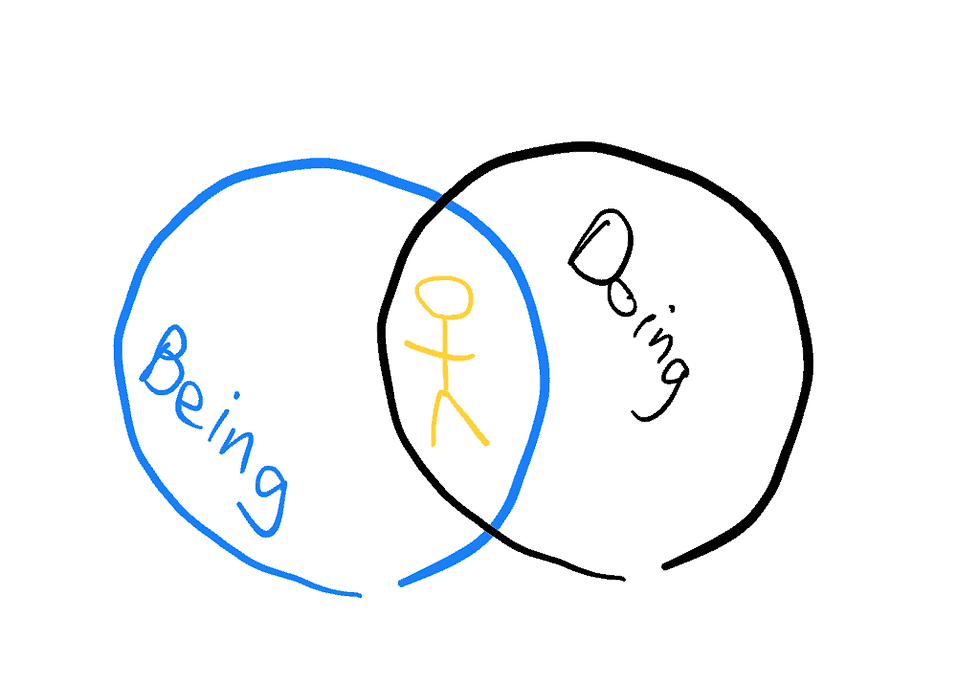BEING vrs. DOING agile; a false argument
- Niall McShane
- Sep 5, 2020
- 4 min read

BEing versus DOing agile
I remember back to 2006 when I was in the middle east in Qatar, Doha. I was playing the role of the learning strategy consultant for the Asian Games; we had to train 30,000 volunteers, leaders and staff in readiness to run the games. The strategy I ended up developing was made up of three elements; simply described as KNOW-DO-BE.
In other words there are competencies that relate to what a trainee needs to KNOW, competencies that relate to what trainees need to be able to DO and sometimes we conducted training that aimed to help trainees become (BE) different people (how they see themselves and the world).
My job was to provide learning strategies for all three of these elements across all roles. On some days I was facilitating leadership workshops with some local Arabs; who they were and what they needed to become to lead the 20,000 volunteers that were about to descend on their small country. Other training I conducted was more practical and based on procedures that needed to be followed (medal ceremonies for example).
Fast forward to today and my work is focussed on supporting agile coaches and practitioners to learn their craft; helping them understand the practical competencies and knowledge required for them to then help others learn about and adopt agile as a way to work. But what about the third element of being agile? Recently I commented in a discussion where the author proclaimed that doing agile is easy whereas being agile is a more challenging undertaking.
I think this is a false argument; saying doing agile is easy without acknowledging its interrelationship to being agile does not correctly frame this discussion. This is not the first time I’ve come across this debate.
I remember in a recent coaching engagement having quite a passionate debate with some change managers I was working with. The topic involved what the emphasis should be for an upcoming change initiative. Should we aim to change people’s mindset or focus more on changing their behaviour through emphasizing practices.
Let me answer the above question with a metaphorical story. Imagine for a moment someone decides that they want to run a marathon. They are sitting on the couch with an empty packet potato crisps on their lap considering what it’s going to take to become a marathon runner. This person gets onto the internet on their iPad and starts browsing websites; they find an online motivational coach, an online training program provider for marathon runners, where to buy running shoes and a smart outfit; they’re pumped!. They then sign up for everything, listens to the motivational podcast, downloads their first month’s training program, all while still sitting on the couch. Although this person is now highly motivated /excited and their mindset is starting to shift, I would argue that they know nothing about what it means to run. Here’s a better approach. When this particular person has the idea of becoming a marathon runner they would immediately stand up, put on whatever pair of shoes they have, go outside and attempt to jog at the slowest possible pace around the block. Only then should they sit back down on the couch and consider if they still want to be a marathon runner (after a little DOing). The recent movie title “Brittany runs a marathon” follows this exact same approach in how they constructed the story of Brittany; the turning point in the movie was when she said out loud that “she’s not running a marathon; she’s a marathon runner”. She’s BEing after many attempts at DOing.
In my example of the couch sitter, the person still has a shift in their mindset when they initially consider running a marathon, a small one; the idea of them being a marathon runner enters their mind and changes their mindset for a moment. I think that is enough of a change for them to then move to action and do something. From that one run around the block the would-be runner will learn more than the 3 hours of iPad Internet browsing. The same can be said for agile and agile adoption. We do not need massive mindset training programs in order for organisations to attempt some new agile practices or experiment with different ways to work. My thinking is strongly aligned with O’Reilly and the Unlearn methodology which puts forward the idea that a person’s mindset will change when they try a different behaviour. When a new behaviour is attempted it shows the person an alternate perspective on how they work. Small repeated, rapid experiments trying different practices will alter your mindset over time; you test and learn towards a new way to work; alternating small changes in mindset with re enforcing behavioural experiments. Keep what works, discard what does not. Over time you become what you do; DOing and BEing become a cycle of change.
So simply calling agile practices (doing agile) easy and a change in mindset (being agile) difficult is a gross oversimplification of a complex neuroscience unlearning process; I hope this little post gets you thinking differently about this important topic.
Keep up to date and join my little email list OR the agile coaching community I host.




Comments